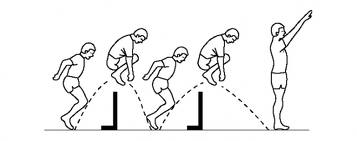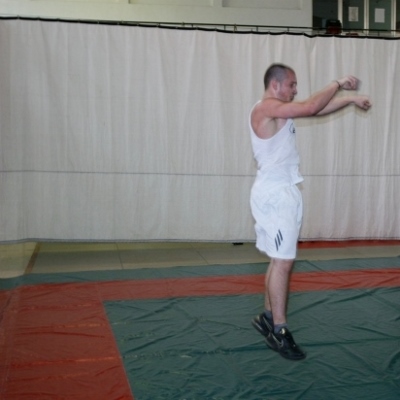 Numerous athletes and coaches make use of plyometric rebounding exercises to create more power, as well as to amplify speed, to develop better coordination, to increase agility, and to increase sporting activities overall performance. It is also important to know that these are generally high risk exercises, and if conducted improperly or conducted without proper technique, plyometrics could raise the possibility of injuries. That said, they are highly effective, but those who are not in top condition may want to work to that point before adding plyometrics to their strength training routine.
Numerous athletes and coaches make use of plyometric rebounding exercises to create more power, as well as to amplify speed, to develop better coordination, to increase agility, and to increase sporting activities overall performance. It is also important to know that these are generally high risk exercises, and if conducted improperly or conducted without proper technique, plyometrics could raise the possibility of injuries. That said, they are highly effective, but those who are not in top condition may want to work to that point before adding plyometrics to their strength training routine.
Plyometric training, also known as “jump training,” became popular by East Germany trainers in the 1970’s. Scientific evidence proved that the movement of quickly stretching muscles prompted a reflex called ‘myotactic’ which caused an intense, powerful contraction. A good example of plyometric training is jumping drills. When jumping, the short cycle of the quadriceps stretching and then shortening increase the height of the jump over time, but more importantly strengthen those muscles for more power. Overall, the continued practice of plyometrics will also reduce the impact on the joints from other workouts.
The key element of an efficient plyometric program is learning a safe and sound landing technique. The proper technique requires that the person land on their toes and rolls back until they are flat on their heels. The landing must also be soft instead of a hard landing. The other important factor to keep in mind while doing plyometrics is to steer clear of twisting the knee or landing sideways.
Being one of the most killer work outs that you can do, it is advised that advanced athletes perform no more than 40 jump repetitions per session, and allow 48 hours between plyometric workouts, as well as the workout routine should not be executed more than 3 times per week. For those who are not advanced in their strength training, follow the advice of the American College of Sports Medicine, as well as The American Council on Fitness, who are in favor of plyometric conditioning.
Be sure that you are strong enough to perform the movements, and find a good trainer to get you properly started and design a routine for your specific level which you can add to as you progress. You will need to check with your sports medicine doctor prior to starting the routine to discuss what measures to take to prevent injury, as well as allowing them to make the decision if you are strong enough for this intense workout.





